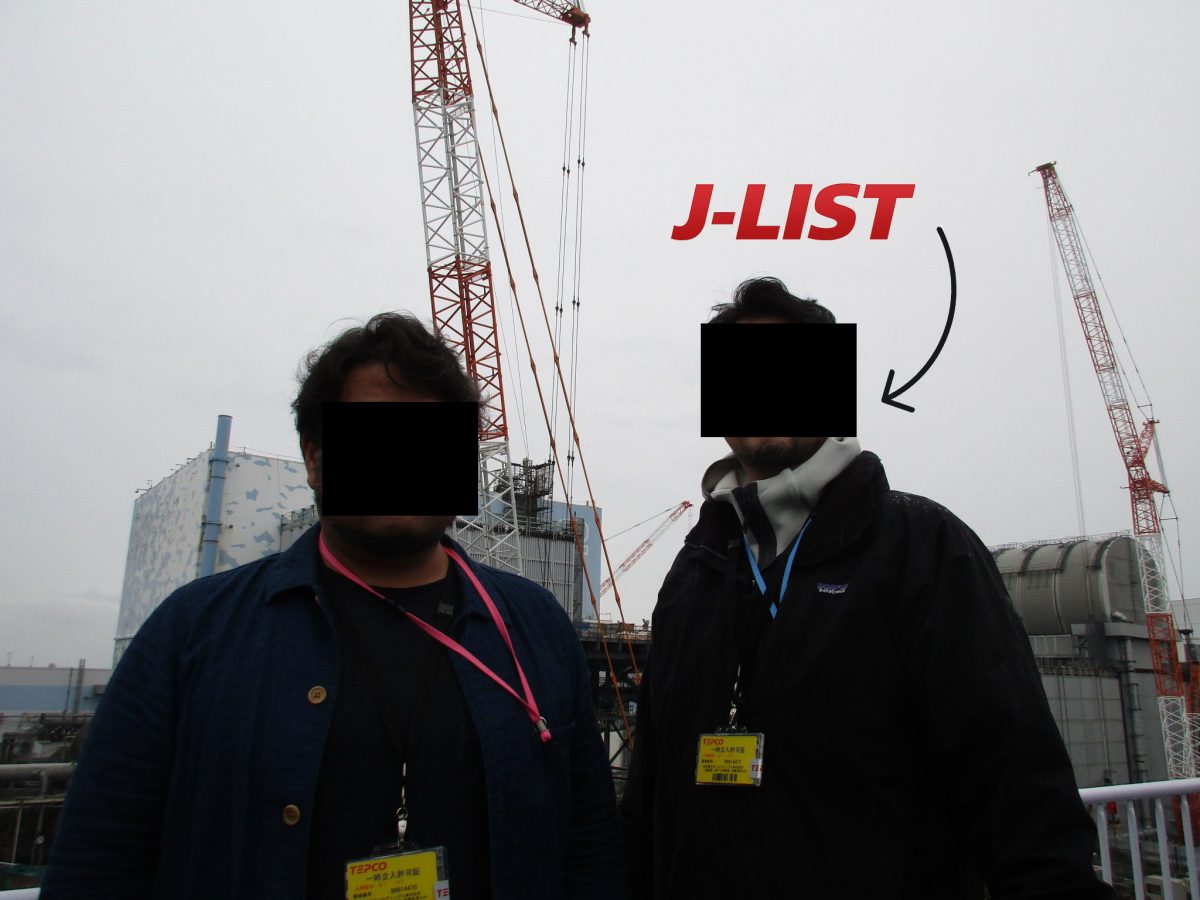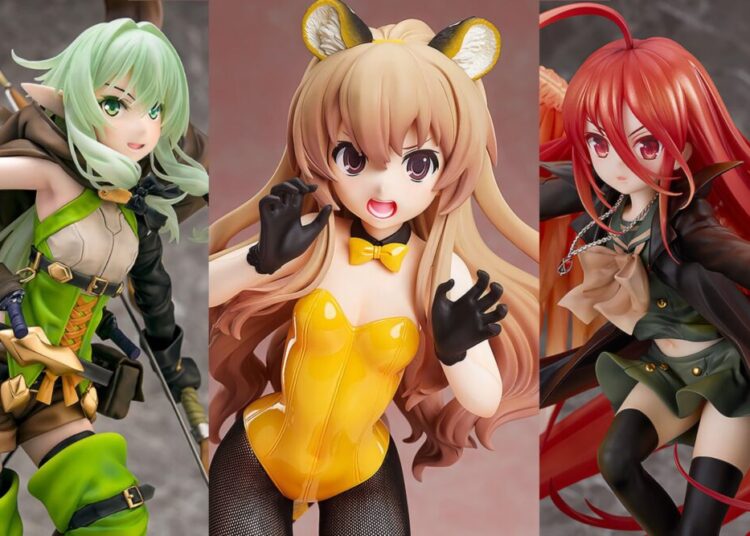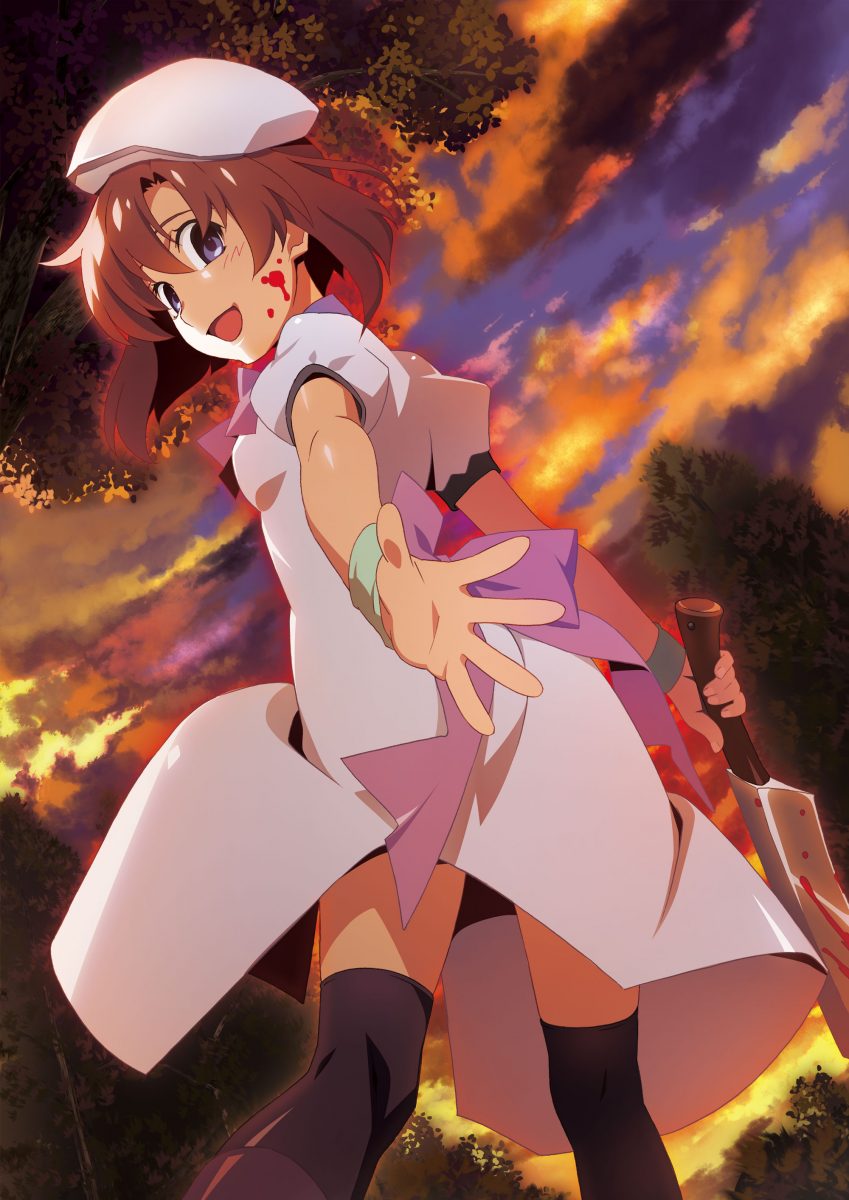2020 has been a year of misery for all of us, and it can be hard to recall a year that’s been so generally awful. The Japanese remember another terrible year, back in 2011, when the country suffered the worst earthquake and tsunami in living memory. A J-List staffer was invited to visit Fukushima, including the ruined Fukushima Daiichi nuclear plant, and here’s a report with photos!
What Happened on 3.11.11?
Nearly 10 years ago, Japan experienced a massive “megathrust” earthquake 70 km off the coast of Sendai, which was a mind-blowing 9.1 magnitude. It was the strongest quake ever measured in Japan, and the fourth strongest ever recorded. Japan has excellent building codes, and any earthquake centered on land would likely not have resulted in significant loss of life…but this one was located offshore and deep inside the Earth, and it sent a relentless wall of water into Japan’s coastal towns, causing terrible destruction. A total of 15,899 people died, with 2529 still reported as missing.
As if that wasn’t bad enough, the wave hit the Fukushima Daiichi nuclear plant, easily flowing over the too-low seawall that had been erected to protect the plant from this kind of event. The water caused the plant’s cooling systems to fail, which lead to a meltdown and release of radioactivity that forced the evacuation of all people within 30 km of the power plant. The problem is still being dealt with, though it’s not the emergency it was right after the event.
Suddenly a part of Japan, a country everyone reading this feels a strong emotional connection to, had become devastated in a way not seen since Chernobyl, and for a time everyone had to obsess over what today’s µSv (microsievert) rating was, the way people in other countries check the weather forecast before going out.
J-List Visits Fukushima. What Did We Find?
Yasu, the hardworking staffer who works with doujinshi artists and visual novel companies to bring you licensed comics from J18 and games from JAST USA, was invited to visit the Fukushima exclusion zone and even enter the Fukushima Daiichi nuclear plant. Pretty much anyone can request permission to visit the plant, provided they’re part of a group tour. Yasu had been an avid protester of Japan’s nuclear power program due to TEPCO’s long string of safety failures and traveled there with a group of interested citizens who wanted to survey the situation directly.
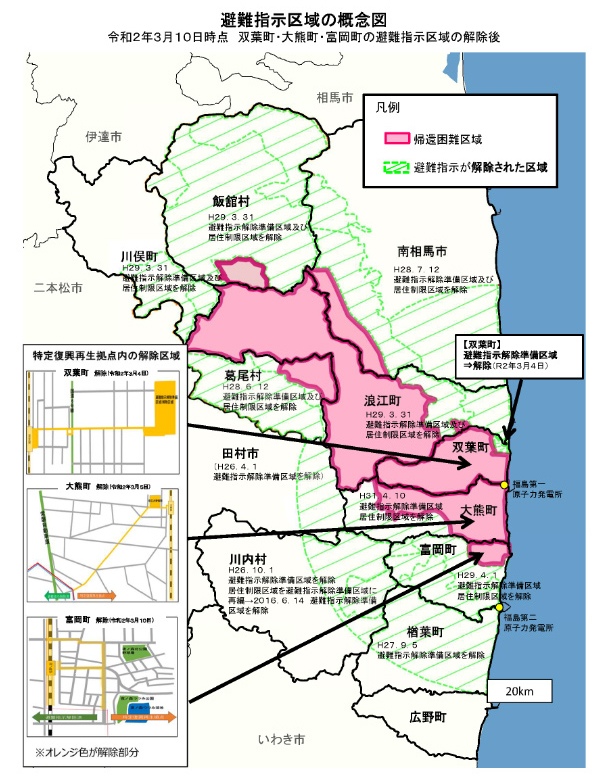
Here’s a map of the area that was evacuated in the aftermath of the disaster, with once-sleepy towns that have become famous for their proximity to the disaster: Futaba-cho, Okuma-cho, Tomioka-cho.
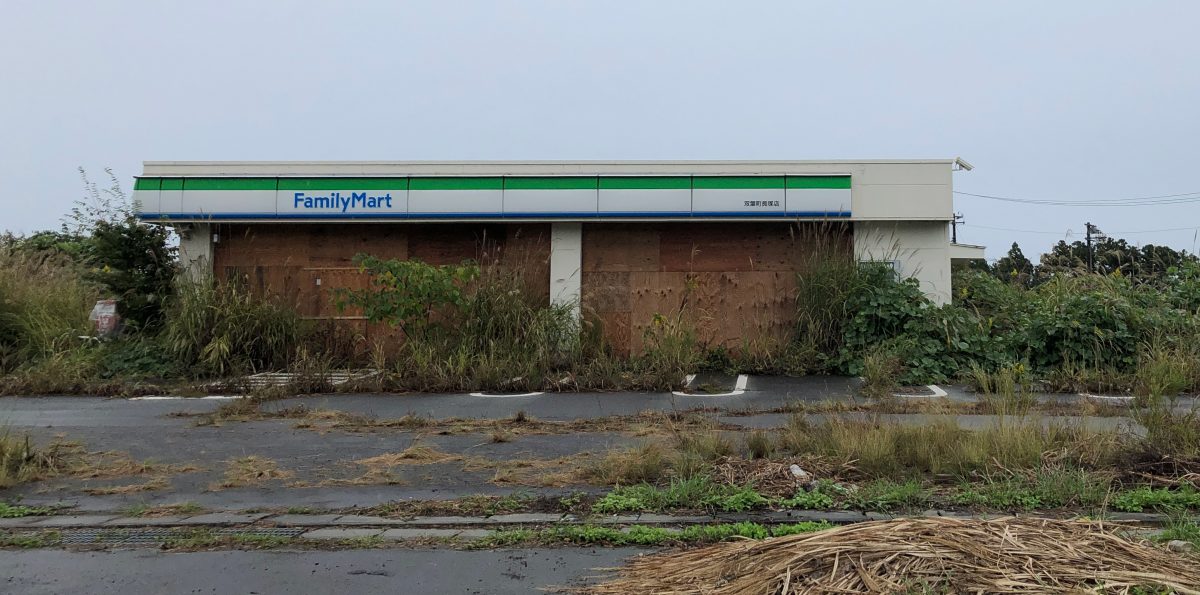
As you can imagine, these areas were utterly destroyed economically, and there are hundreds of abandoned homes and businesses just rotting. Once upon a time, the Japanese had a fascination with 廃墟 haikyo, or modern ruins, and aficionados would journey to visit these lonely places and take photos of their solemn beauty. J-List has carried more than a few haikyo photobooks over the years, including one that showed the modern ruins of an old amusement park in Takasaki that I had happened to visit with my son before it closed. The term for the emotion Japanese feel when they look at these old ruins is 切ない setsunai, a kind of wistful sadness that, in the past, some have actively sought out.
But likely no more. Because of the reasons behind the abandonment of the towns around the Fukushima Daiichi plant, I don’t believe you’ll find haikyo fans exploring like you would have had in years past.
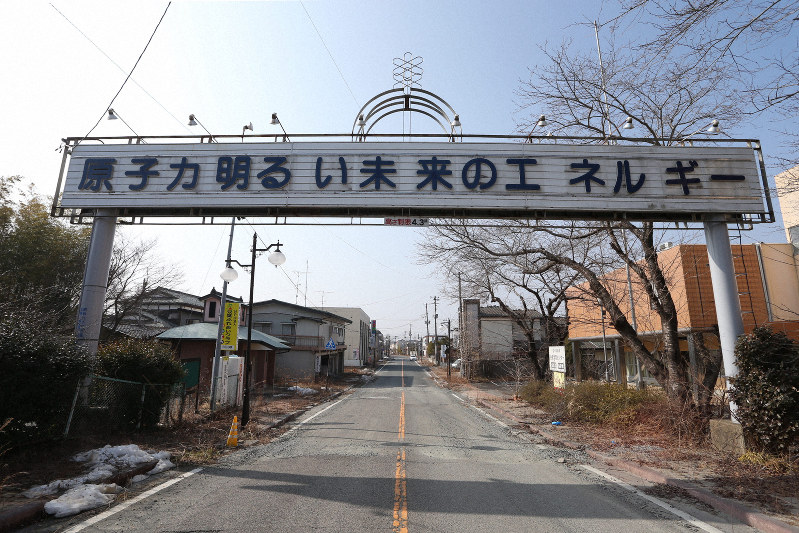
This looks like a screenshot from a Fallout game, a sign erected decades ago proclaiming, “A Bright Future with Nuclear Energy.” Whoops!
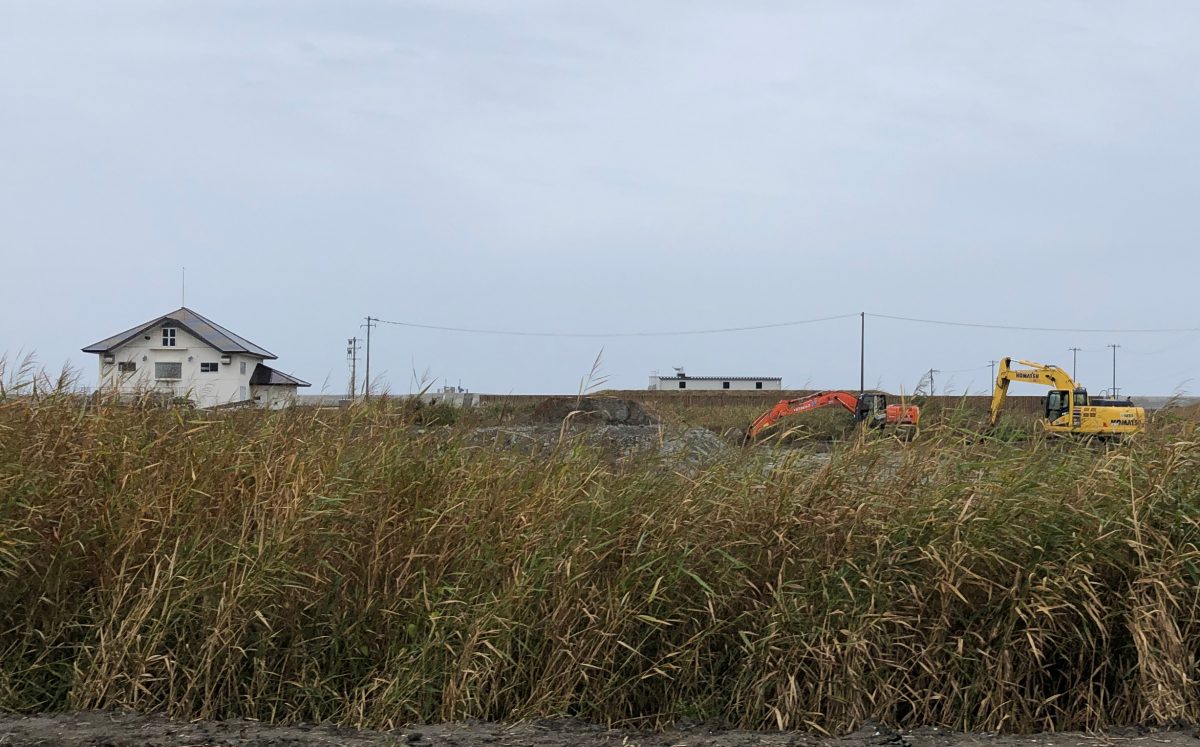
And yet, there’s nothing as stubborn as a Japanese person. Here’s a hill next to the sea where many houses once stood, but they were all destroyed by the wall of water that suddenly hit on that day. The house above is newly rebuilt since the disaster, while construction on a second house next to it is about to begin.
One reason Japanese feel such a connection to land, often living their entire lives in the area they were born in, is because that’s where the family grave is located. They’re literally unwilling to leave their land because the spirits of their dead ancestors wouldn’t know where to find them during the Obon holidays each August, when their spirits are thought to return to spend time with the family.
Read my post about Buddhist funerals work in Japan here.
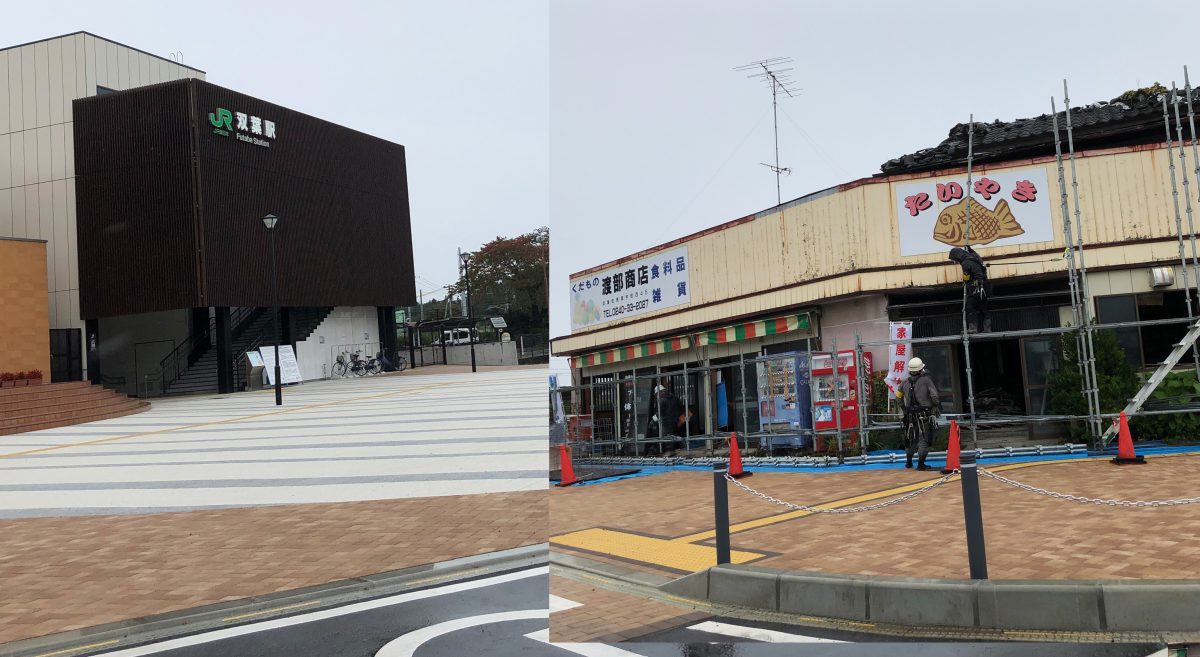
Some more signs of rebuilding and recovery: a sparkling new Futaba Station, which was rebuilt last March, and workmen working on a nearby takoyaki shop.
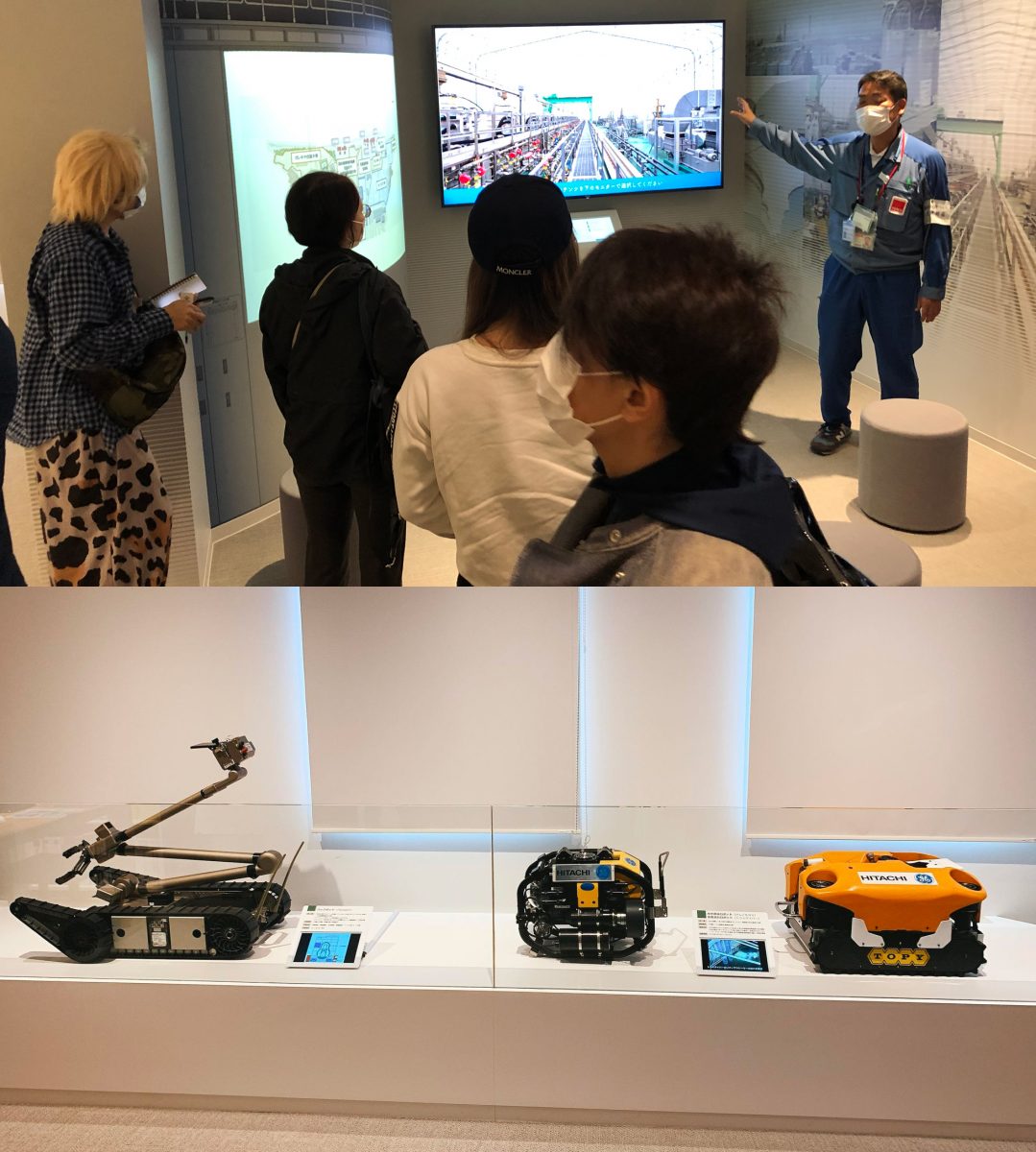
Japan just loves building 資料館 shiryokan, or archive halls, where data from past events can be stored for preservation and education of future generations. This is the TEPCO Decommissioning Archive Center, where you can see all kinds of data related to the disaster and aftermath, and what kinds of robots TEPCO used to survey the most dangerous parts of Fukushima Daiichi.
Living with Radiation in Fukushima
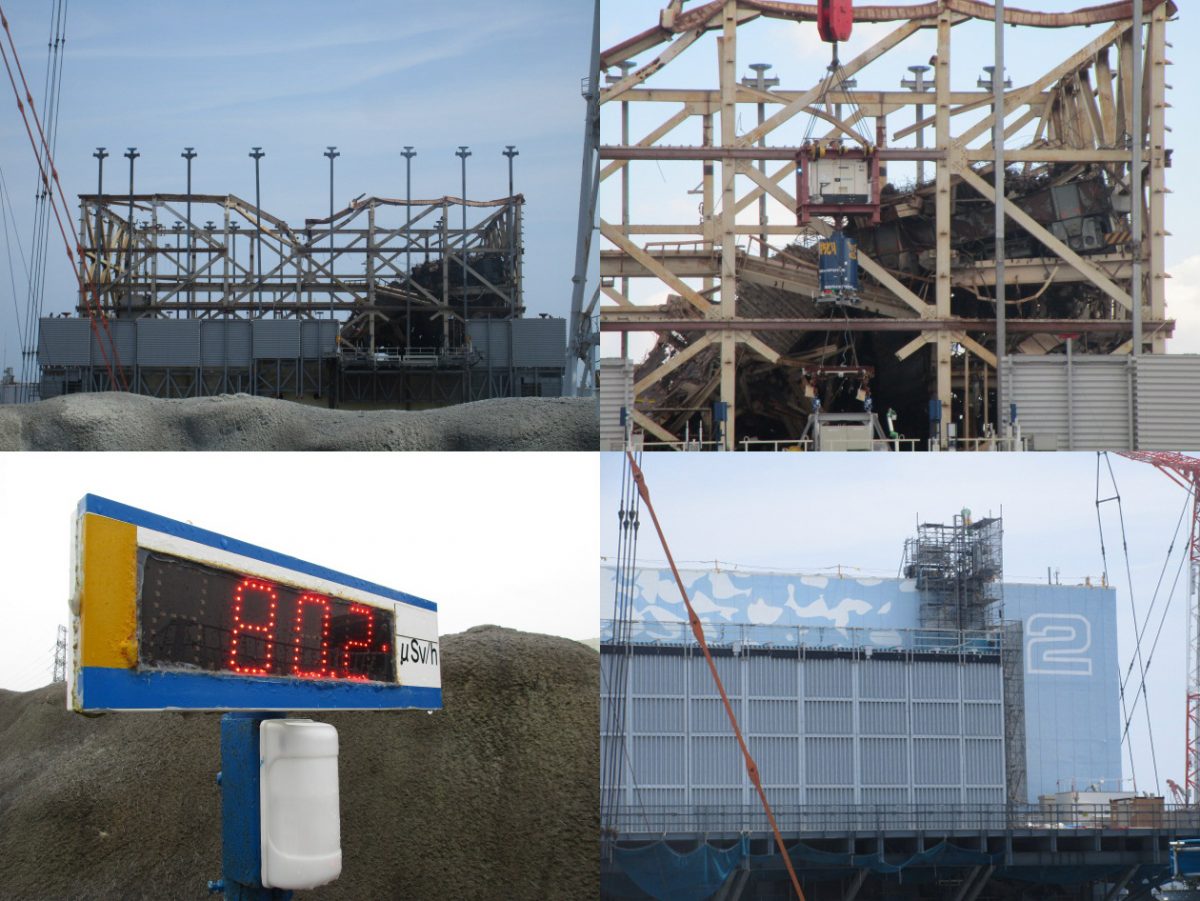
Here are some pictures from the Fukushima Daiichi plant itself, though photos of the interior were not permitted. As you can see, the area beside the plant is a raging 80 µSv, so they didn’t stay in this area for long.
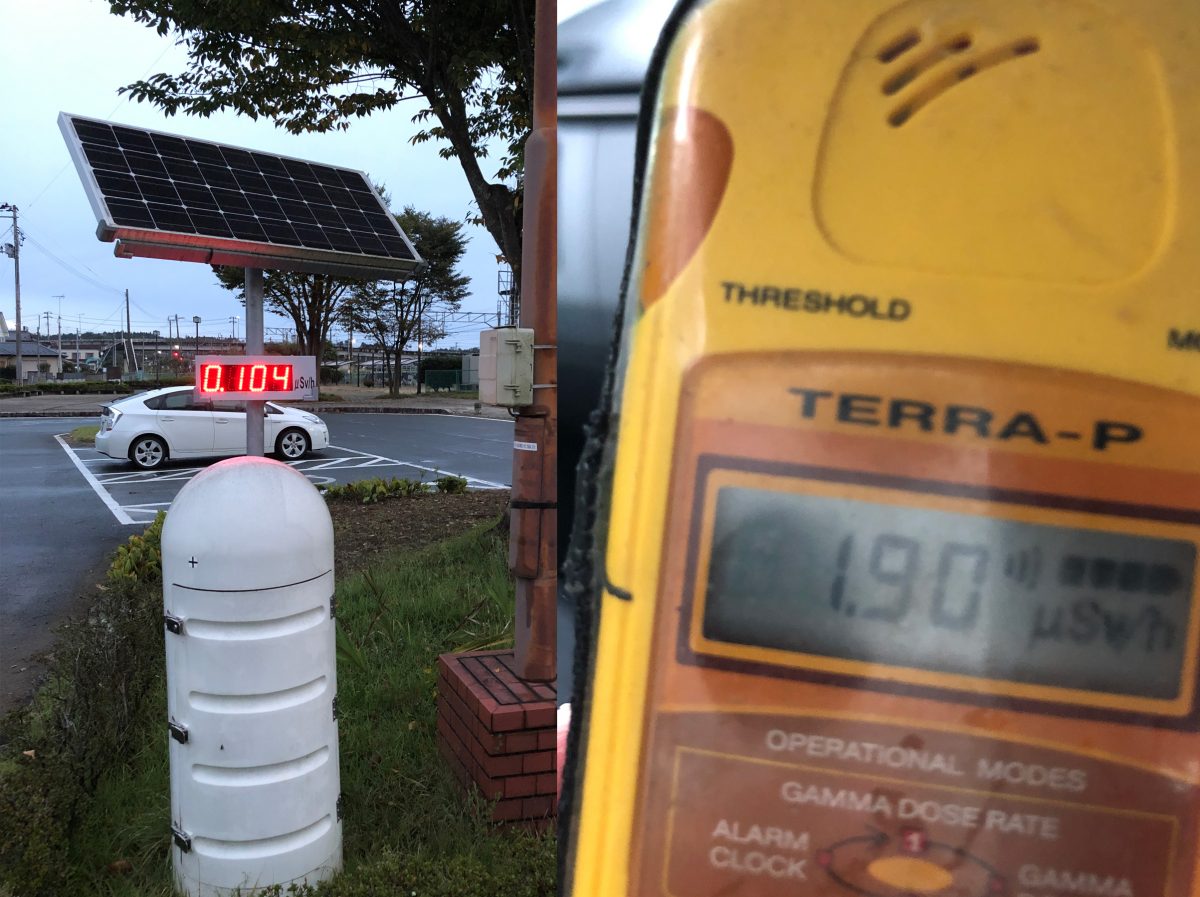
Elsewhere Yasu registered ratings of 1.9 µSv very near the nuclear plant, several kilometers away, at the archive center, and 0.66 µSv another 500 meters away. it was “only” 0.1 µSv at the archival center, several kilometers away
But here’s the thing about radiation: humans are extremely bad at making calm judgments about the real danger of the stuff, which is actually shooting through your body right now, no matter where you are in the world. All cities, for example, have high levels of radiation when measured in microsieverts for various reasons, because of what natural radioactive sources they’re near, and because of the energy generated inside the city itself. Aberdeen, Scotland, is the most radioactive city in the world.
Some random numbers from a non-expert anime blogger about radiation.
- Standing next to Fukushima Daiichi gave off a rating of 80 µSv. Remember this is 80 microsieverts per hour, so it’s a measurement of how many particles hit a Geiger counter sensor (or your body) per hour.
- 500 meters away, was down to 1.9 µSv.
- J-List’s home town of Isesaki, located 260 km to the south of Fukushima, has a daily rating of around 0.01~0.02 µSv (very low).
- Eating a steak dinner, 0.99 mSv (millisieverts), which is 990 µSv (microsieverts). So everything you eat is raising your body’s radioactivity.
- Fly in an airplane, receive 0.16 mSv, or 160 µSv. Flying brings you closer to space and thus gives you a small dose of radiation. Female cabin attendants, who fly for a living, must get increased screening for breast cancer as a result of this extra danger.
- Climb Mt. Fuji: 0.1 µSv at the summit.
- Take a volcanic hot springs bath: 0.11 µSv.
- Spend time in the International Space Station, 20-41 µSv per hour.
- Get a CT scan: 2.4-12.9 mSv, or 2400-12900 µSv.
- Get an x-ray: 0.6 mSv, or 600 µSv.
Bottom line, we’re all receiving doses of radiation every day, and it’s not generally harming us nearly as much as our lizard brains fear. Sadly, everyone who comes from Fukushima, and every farmer trying to sell crops grown in Fukushima, faces a terrible bias as most Japanese people are less than happy at the prospect of engaging with anyone who might be “radioactive.” This sadly happened to the survivors of Hiroshima 75 years ago, too.
Thanks for reading this report looking at the sadness Fukushima has been through over the past decade! Got any questions about this post? Let us know below, or on our Twitter!
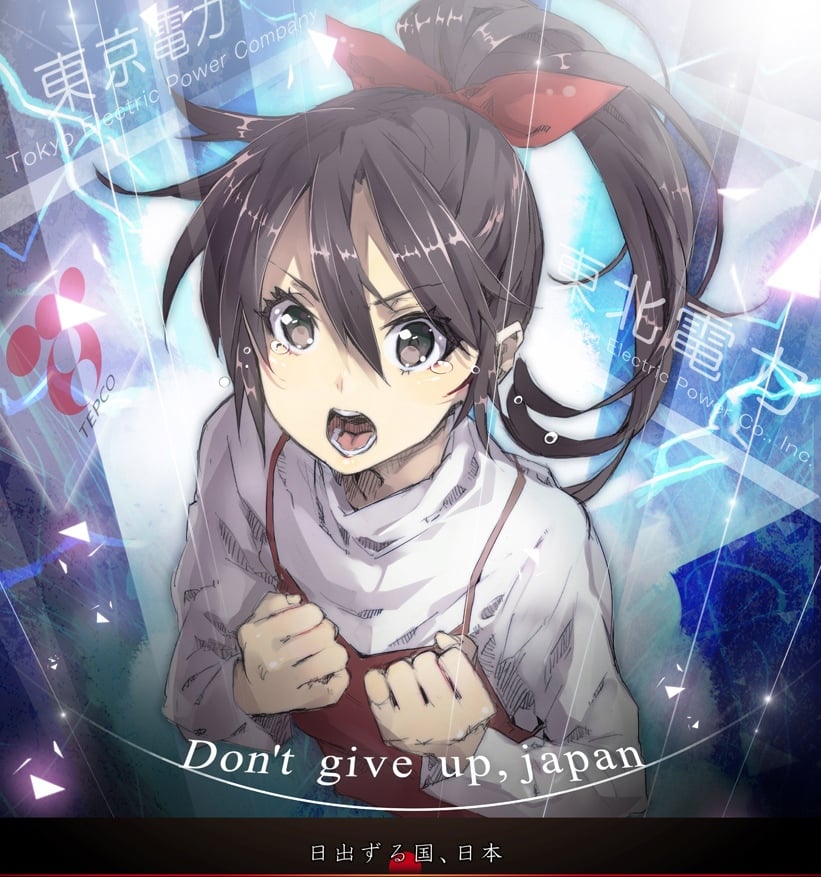
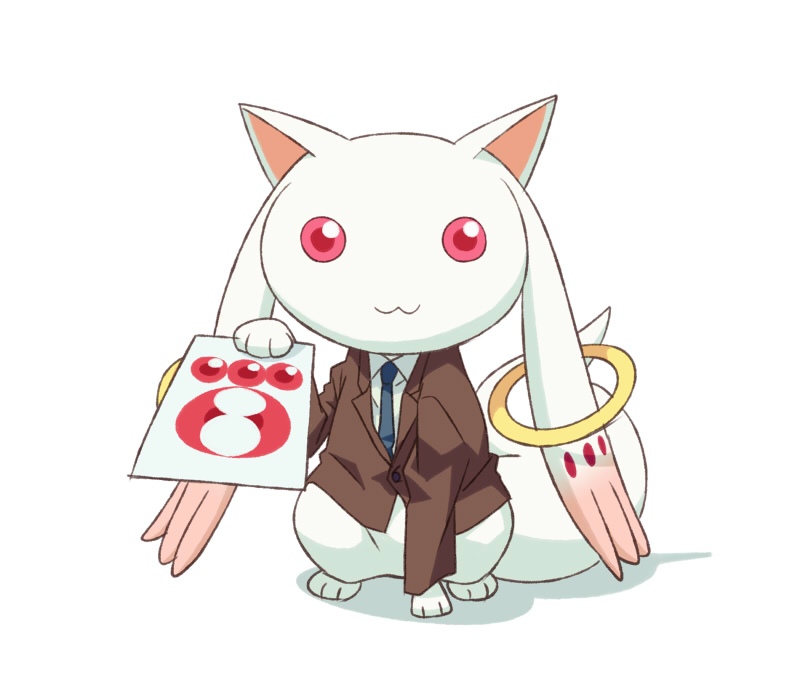
“Want to sign a contract for this great nuclear reactor?”
Great news! J-List has started the new Fukubukuro grab bags, which are always such a popular item with J-List customers. We’ve got both fun toy and plush Grab Bags as well as a really great ecchi mystery box filled with fun items. Browse the new Fukubukuro offerings here!


